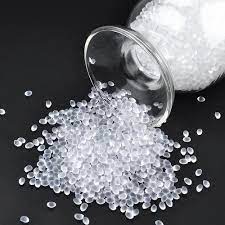
The Versatile World of Thermoplastic Polyurethane (TPU)
Thermoplastic polyurethane (TPU) is a unique material that has gained widespread popularity and recognition for its versatility and wide range of applications. TPU is a type of polyurethane plastic that combines the best properties of rubber and plastic, making it an ideal choice for various industries.
Properties of TPU
TPU is known for its exceptional flexibility, durability, and resistance to abrasion, oils, and chemicals. It can be easily molded into different shapes and forms, making it suitable for a diverse set of applications. TPU also offers excellent elasticity and transparency, further enhancing its usability in various products.
Applications of TPU
TPU finds extensive use in industries such as automotive, footwear, electronics, sports equipment, medical devices, and textiles. In the automotive sector, TPU is used for manufacturing car parts like bumpers, seals, hoses, and interior components. In footwear production, TPU is commonly used in outsoles and midsoles due to its durability and flexibility.
In electronics, TPU is utilized for cable insulation and protective cases for gadgets. Sports equipment manufacturers use TPU in products like helmets, pads, and inflatable structures due to its impact resistance and lightweight nature. The medical industry benefits from TPU’s biocompatibility in applications such as catheters, tubing, and prosthetics.
Advantages of TPU
The key advantages of using TPU include its high performance in demanding environments, excellent resistance to wear and tear, good weatherability properties, ease of processing through methods like injection molding or extrusion, as well as its ability to be recycled or reused.
Future Prospects
As industries continue to seek sustainable solutions and innovative materials that offer superior performance characteristics, the demand for thermoplastic polyurethane is expected to grow. With ongoing research and development efforts focused on enhancing the properties of TPU further while ensuring eco-friendliness throughout its lifecycle, the future looks promising for this versatile material.
Maximizing the Potential of Thermoplastic Polyurethane: Five Essential Tips for Working with TPU
- Thermoplastic polyurethane (TPU) is a versatile material known for its flexibility and durability.
- TPU is often used in applications requiring abrasion resistance, such as in protective cases for electronic devices.
- When working with TPU, it is important to use proper ventilation due to potential emissions during processing.
- To enhance adhesion when bonding TPU to other materials, consider using adhesion promoters or surface treatments.
- TPU can be recycled, so remember to explore recycling options for environmentally friendly disposal.
Thermoplastic polyurethane (TPU) is a versatile material known for its flexibility and durability.
Thermoplastic polyurethane (TPU) is a versatile material renowned for its exceptional flexibility and durability. TPU combines the best qualities of rubber and plastic, making it ideal for a wide range of applications across various industries. Its ability to withstand abrasion, oils, and chemicals while maintaining flexibility and resilience makes TPU a popular choice for products requiring strength and adaptability.
TPU is often used in applications requiring abrasion resistance, such as in protective cases for electronic devices.
Thermoplastic polyurethane (TPU) is frequently chosen for applications that demand high abrasion resistance, such as in the production of protective cases for electronic devices. The inherent durability and toughness of TPU make it an excellent choice for safeguarding electronic gadgets from daily wear and tear, ensuring that these devices remain protected and functional over extended periods of use.
When working with TPU, it is important to use proper ventilation due to potential emissions during processing.
When working with thermoplastic polyurethane (TPU), it is crucial to prioritize proper ventilation in the processing area. This is essential to mitigate potential emissions that may arise during the manufacturing or shaping of TPU materials. Adequate ventilation not only ensures a safe working environment for operators but also helps in controlling and minimizing any harmful fumes or gases that could be released during the processing of TPU. By following strict ventilation protocols, manufacturers can uphold workplace safety standards and promote a healthier environment for all individuals involved in handling TPU materials.
To enhance adhesion when bonding TPU to other materials, consider using adhesion promoters or surface treatments.
When bonding thermoplastic polyurethane (TPU) to other materials, it is advisable to enhance adhesion by utilizing adhesion promoters or surface treatments. These additional steps can improve the bond strength between TPU and the substrate, ensuring a more reliable and durable connection. Adhesion promoters help create a strong interface between TPU and the mating material, while surface treatments enhance the surface energy of TPU, promoting better adhesion. By incorporating these techniques into the bonding process, manufacturers can achieve superior adhesion performance in their TPU applications.
TPU can be recycled, so remember to explore recycling options for environmentally friendly disposal.
When working with thermoplastic polyurethane (TPU), it’s essential to keep in mind that TPU can be recycled, offering an environmentally friendly disposal option. By exploring recycling options for TPU waste, you not only contribute to sustainability efforts but also reduce the environmental impact of discarded materials. Remembering to prioritize recycling TPU can help in conserving resources and promoting a circular economy where materials are reused efficiently, benefiting both the industry and the environment.
